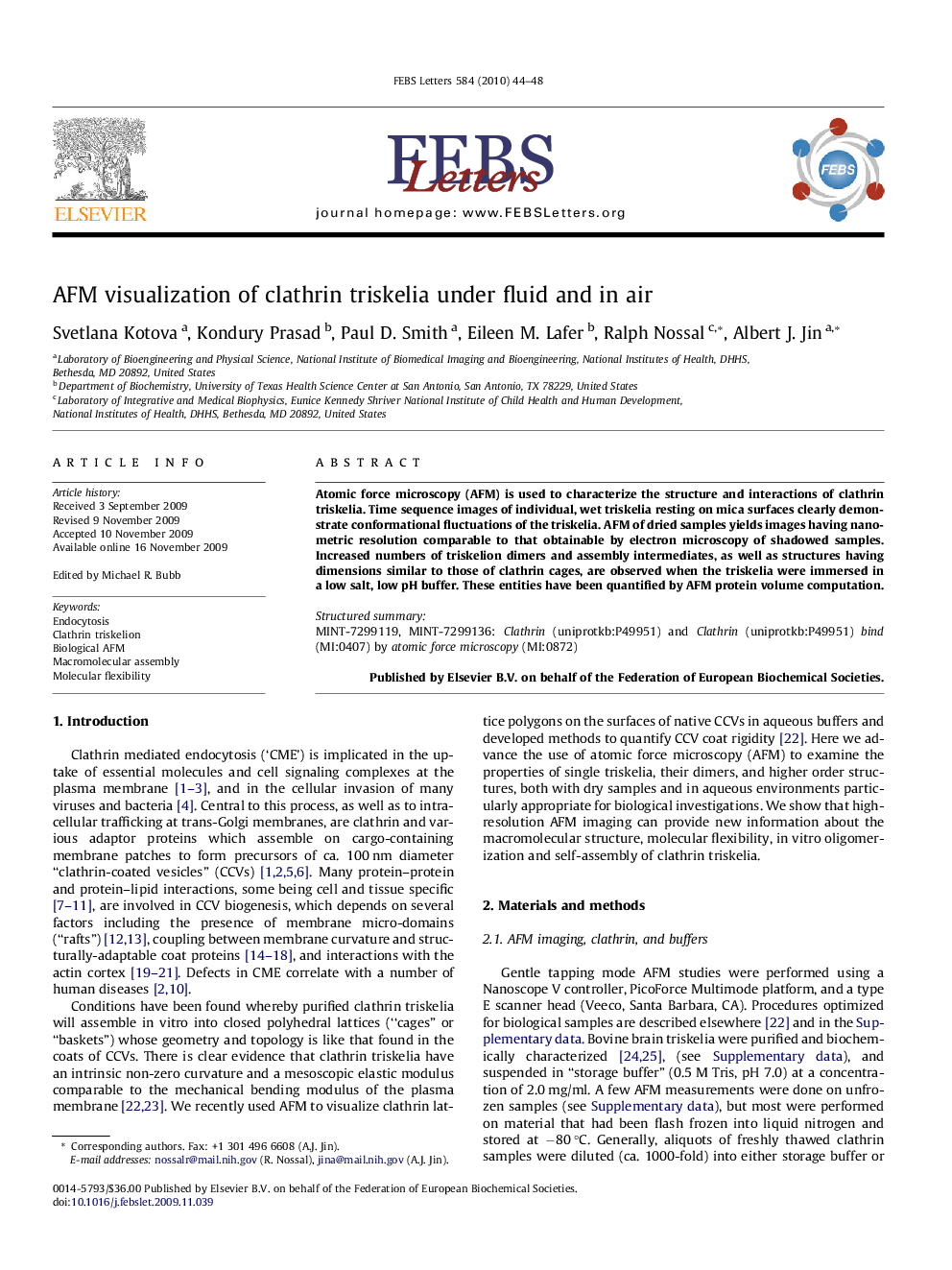| Article ID | Journal | Published Year | Pages | File Type |
|---|---|---|---|---|
| 2048850 | FEBS Letters | 2010 | 5 Pages |
Atomic force microscopy (AFM) is used to characterize the structure and interactions of clathrin triskelia. Time sequence images of individual, wet triskelia resting on mica surfaces clearly demonstrate conformational fluctuations of the triskelia. AFM of dried samples yields images having nanometric resolution comparable to that obtainable by electron microscopy of shadowed samples. Increased numbers of triskelion dimers and assembly intermediates, as well as structures having dimensions similar to those of clathrin cages, are observed when the triskelia were immersed in a low salt, low pH buffer. These entities have been quantified by AFM protein volume computation.Structured summaryMINT-7299119, MINT-7299136:Clathrin (uniprotkb:P49951) and Clathrin (uniprotkb:P49951) bind (MI:0407) by atomic force microscopy (MI:0872)
